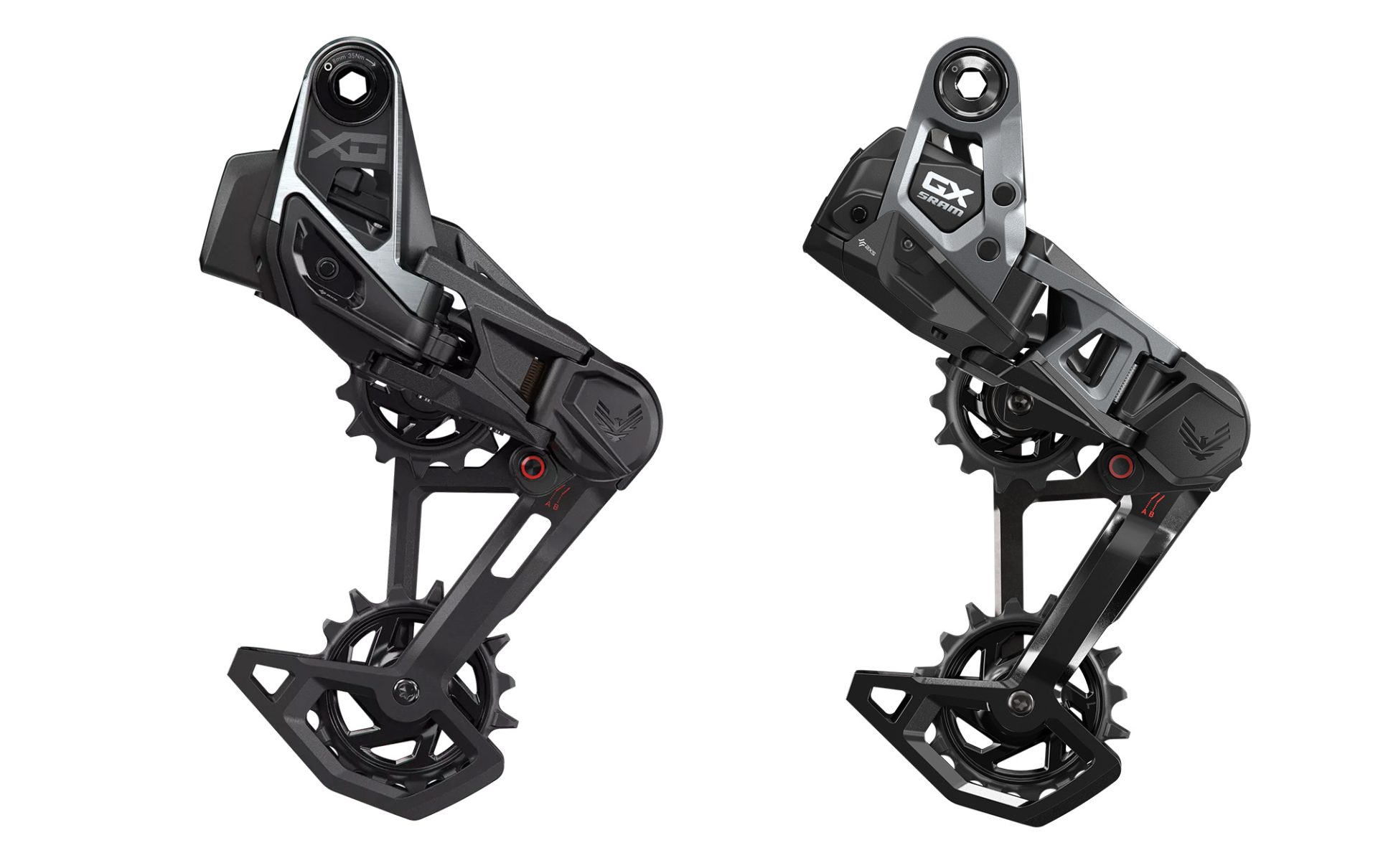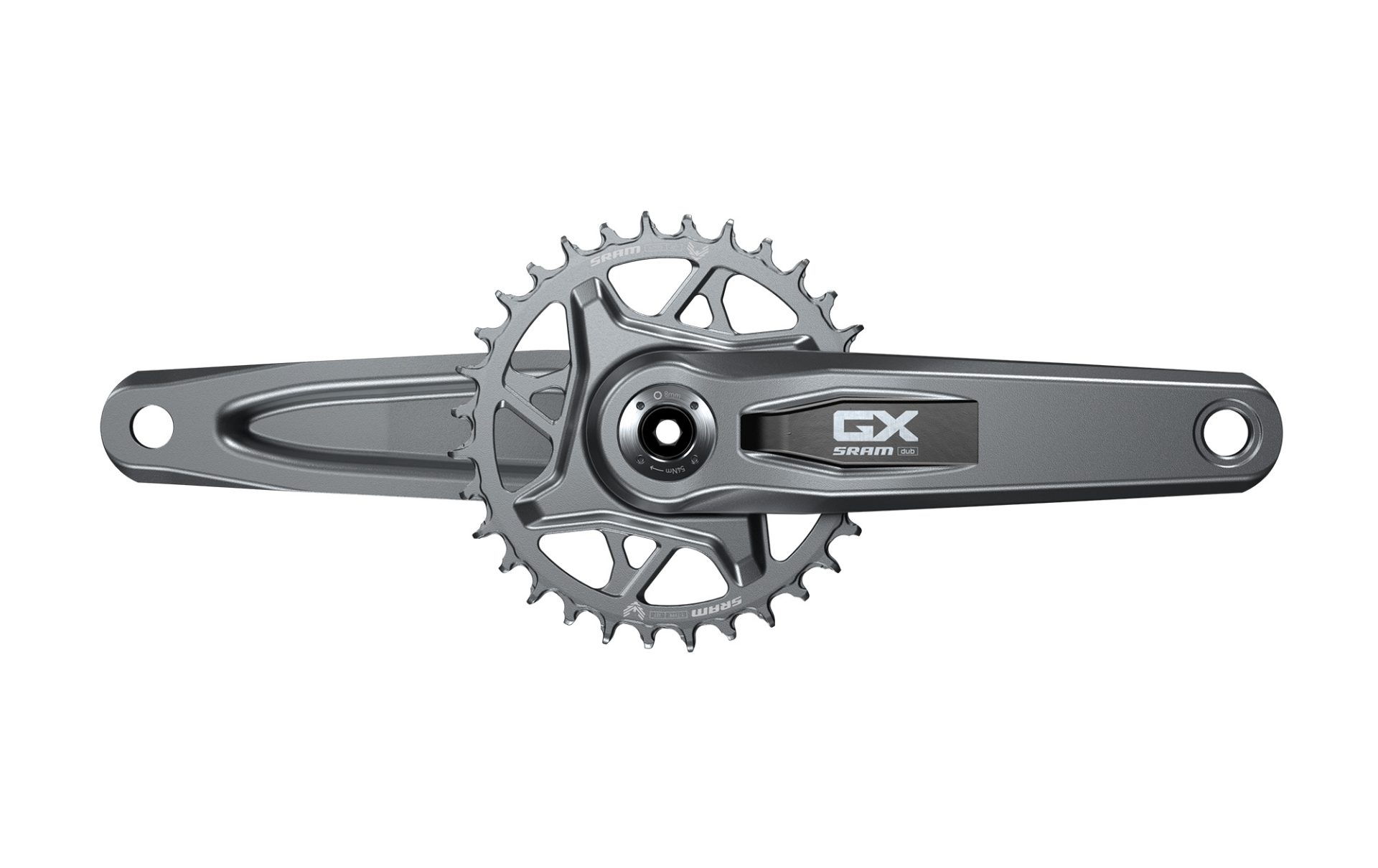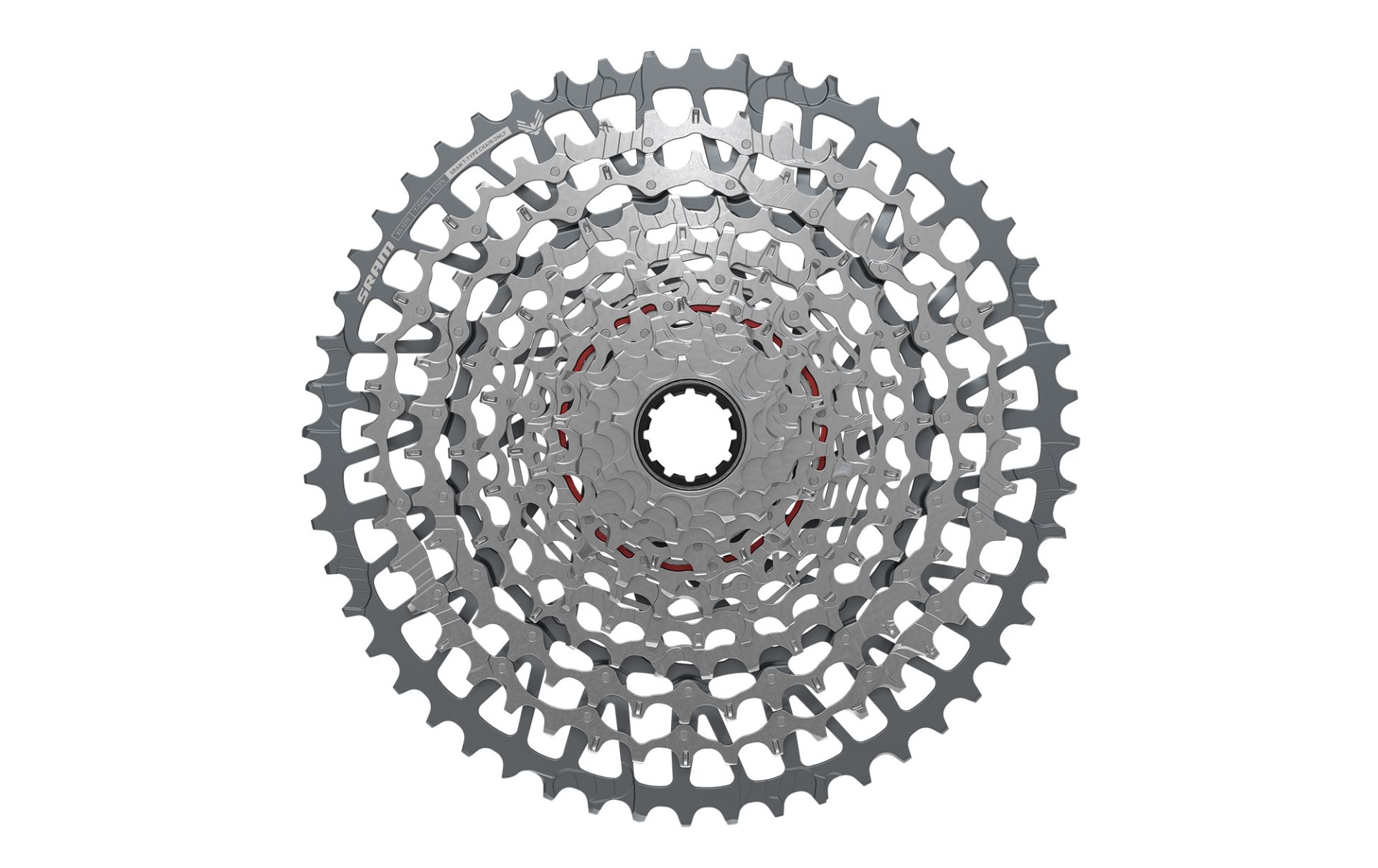It’s been a busy year for SRAM. On the dropbar side, we’ve seen the Chicago-based company revise its Force AXS road offering and release new wireless and mechanical options for its entry-level Apex range. Meanwhile, things have been equally busy in the mountain bike camp with the release of its Eagle AXS Transmission, a system built upon the company’s Universal Derailleur Hanger design.
Less than four months after revealing its new 1×12-speed XX SL, XX, and XO mountain bike groups, SRAM has now released the same Transmission system at a more affordable GX-level. And yes, you’re right to think that this is some quick and aggressive trickle-down of the technology.
Eagle Transmission refresher
The new Eagle AXS Transmission represented a relatively large change in derailleur-based drivetrain design. The most important element is that it fits the rear derailleur directly to SRAM’s already widely implemented Universal Derailleur Hanger (UDH) design – a frame design element that almost all new mountain bikes share and is now becoming a common sight amongst many of the latest gravel and road bike releases.
SRAM’s Eagle AXS Transmission is restricted to use with UDH-compatible frames – it simply won’t fit anything else. Similarly, the derailleur is sized to only match with a 10-52T cassette. It requires the use of SRAM’s new cassettes and T-Type chains. And as a result of everything being so controlled by SRAM, the derailleur does away with all the usual limit screws and B-screw adjustments.

As with all of SRAM’s AXS electronic wireless components, the Transmission groups can be controlled with a range of shifters, including those from the company’s gravel and road ranges. This allows for the latest UDH-compatible road and gravel frames to be set up with the wide-range 1×12 Eagle Transmission, as was seen at the Handmade Bicycle Show Australia.
There’s quite a bit to take in concerning SRAM’s Transmission, which sure teases the future of gravel and road bike drivetrains. For a refresher on the tech or to learn about it for the first time, check out my in-depth review of the Eagle AXS Transmission in the race-focussed XX SL version.
Now at a GX level
As has long been the case with SRAM, the company produces a product at the premium level and then changes materials and construction methods in order to trickle that technology down to lower price points. And that’s exactly the story with the new GX Eagle Transmission.
The new GX shares all the same compatibility and features as the previously released Eagle Transmission AXS components. All derailleurs, shifters, chains, cassettes and cranksets can be mixed and matched within the Transmission series.
The only notable design difference is seen at the rear derailleur, where the same removable AXS battery is now further tucked into the protected body of the derailleur. Otherwise, it’s effectively all the same stuff with equal shift performance, just with heavier materials and construction, with the steel derailleur cage being one example.

Actual weights of the new GX derailleur (with battery), cassette, and crank (including 32T ring and bashguard) are 488, 433, and 738 grams, respectively. By comparison, the equivalent XO derailleur, cassette, and crank are 472, 380, and 701 grams. As has already been discussed with our previous coverage of SRAM’s Transmission, it is heavier (and seems to be vastly more robust) than older Eagle AXS stuff.
Beyond the weight, you’ll also miss one tiny trick: as with the recently released Eagle XO, the new GX derailleur forgoes the “Magic Pulley” that spins when jammed with a stick. However, and just like XO, the pulley wheels or even the whole cage assembly can be easily upgraded.
The open cross-compatibility between new Eagle Transmission components is surely good news to anyone who has seen the prices of the required chain (they previously started at US$100), and thankfully new GX introduces a chain at a more palatable US$50 / €60 / £55. That’s a good saving, but I’ll speculate that XX- and X0-level chains, which offer SRAM’s Hardchrome finish, will still offer vastly superior durability (and, therefore, potentially better long-term value). I base this on what we’ve seen with previous-generation Eagle and Flat Top chains.


Options for crank lengths (165, 170, 175 mm) and chainring sizes (30, 32, 34T) are a little more limited versus the more expensive (and again, cross-compatible) offerings. Similarly, there is no spindle-based powermeter option for new GX.
A GX Eagle Transmission group, including the pod shifter, retails for US$1,099 / €1,300 / £1,180. The next step up in SRAM’s lineup is Eagle XO at US$1,599 / €1,900 / £TBC. You can, of course, buy individual pieces. The cassette is US$250 / €300 / £270, a GX rear derailleur will set you back US$400 / €480 / £430, and the crankset is US$200 / €240 / £215.
SRAM has also announced new “Bronze” Stealth brakes to provide a colour match for the new GX components.
It’s unusual to see such new technology trickle down in only months, but that’s exactly what SRAM has done with its latest GX release. It’s likely a safe assumption that the aggressive move will prove a successful strategy in stealing further mountain bike market share from Shimano in how new bikes are specified.
My colleague James Huang recently received the new GX Eagle Transmission for test, and early impressions are that it shifts the same as the more premium options. Expect a long-term review of SRAM’s Eagle Transmission in the future.
What did you think of this story?

